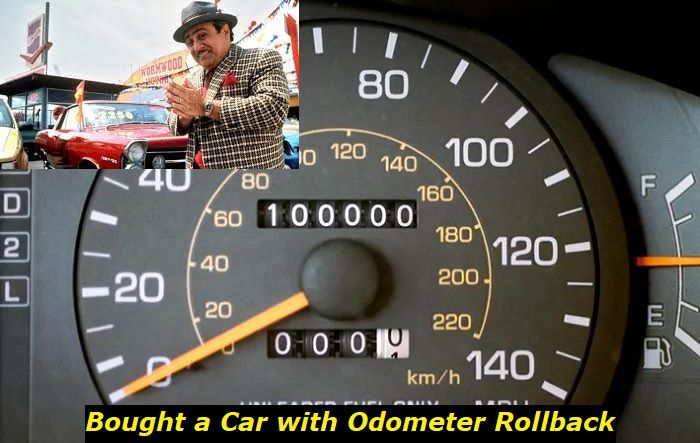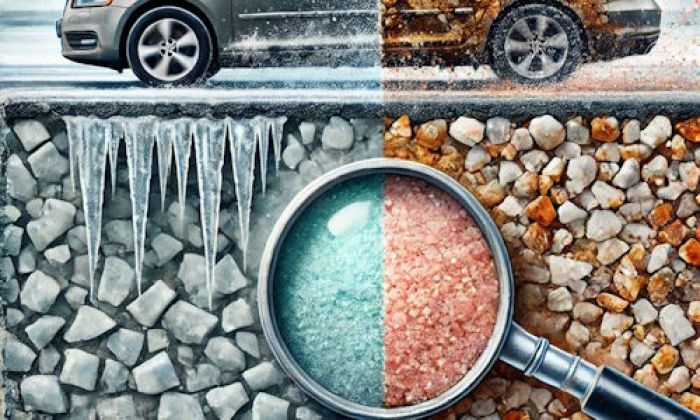If your car is not running as smoothly and silently as you are accustomed to, you have every right to be concerned. Paying attention to any unusual noises coming from your car is the best way to avoid any mechanical problems looming underneath.
Relay problems highlights
- Level of urgency:low
- DIY inspection:possible but complicated
- DIY repair:possible
- Can you drive?yes
- Price for repairs:$20 - $250
- Symptoms:certain functions may not work, clicking sound
- Ways to solve:replace the faulty relay

Can You Drive with a Clicking Noise Behind the Glovebox?
Yes. The clicking noise does not affect your car's safety features because malfunctions in your HVAC system usually cause it. While it is safe to drive with the noise, it is not advisable to ignore it. Failing to solve the clicking noise could severely damage your HVAC system. You should drive your car to a reputable auto repair shop as soon as you can to avoid further damage.
Common Causes of Clicking Noise from Glovebox
The top causes of a clicking noise behind your glovebox or dashboard include the following:
- A malfunctioning blend door actuator - the most common cause
- A defective blower motor
- Damaged recirculation doors
Remember that most causes are best diagnosed and repaired by a certified auto repair technician.
1) Malfunctioning Blend Door Actuator
Your blend door actuator is a tiny electrical component that regulates the temperature and airflow in your car's main cabin. This small plastic box is crucial to your vehicle's HVAC system. It contains several gears that work to ensure optimal temperature and airflow. If your blend actuator door is damaged or malfunctioning, you will likely hear a clicking noise behind your glove box.
When a bad blend actuator door is to blame for the clicking noise, chances are high that your plastic gears are worn out. The other likely cause of a defective blend door actuator is the burning of the electric motor inside the box. Whatever the cause, clicking or knocking noise behind your glovebox is likely to follow damage to your blend actuator door. The noise will most likely be heard when you start your vehicle or switch on the air conditioning.
Solution:
In most instances, replacing a malfunctioning blend actuator door is the most appropriate and effective repair. Luckily, this tiny plastic box is cheaper to replace than most car components. The only downside is DIYers may need professional help to replace the blend actuator door because the box is notoriously challenging to locate, access, and replace.
Drivers with enthusiasm for home repairs can try to undertake the project at home. However, it is advisable to spare your time, effort, and money by relying on an experienced mechanic to perform the replacement. For those who choose to roll up their sleeves ad solve the problem themselves, these steps will prove helpful:
- Locate and remove your glovebox or dashboard panel. To remove the panel, you need to unscrew the mounting boots that hold them in place. After unscrewing all the mounting boots, it should be easy to grab the cover and pull it out.
- Next, you must find your exposed heater box and locate your blend actuator door.
- Find the safety that connects the actuator to the harness and disconnects it. Take caution to ensure the clips do not break off as you unscrew them. They are often made of fragile plastic that can break off easily if you apply too much force while unscrewing them.
- All that is left is to pull the wiring connector to remove your malfunctioning blend door actuator.
- Inspect your connectors for signs of rust and corrosion. Clean and dry them if they are negatively affected.
- If any mounting bolts are still connected to your blend door actuator (about two or three), unscrew them and pull out your blend door actuator.
- Finally, you will need to install your new actuator by reversing all the steps detailed above. Before screwing the new blend door actuator in, ensure that it can freely turn in both ways, i.e., it is not stuck in position.
After replacing your blend actuator door, you should start your car and enjoy the lack of an annoying clicking noise behind your glove box. If the noise persists, the problems below may be to blame.
2) Faulty Blower Motor
The blower motor is yet another vital part of your car's HVAC system that could cause clicking noises originating behind your glovebox. The blower motor drives cold or hot air through your vents per the fan speed and climate setting you have selected. As you set your fan speed, your vehicle's electronic control unit sends the appropriate signal (slow down or speed up) to your fan's blower motor resistor.
If your fan is functioning as expected, only a small volume of air will leave your interior vents. In some instances, your blower motor may be functioning optimally but suffering damaged fuses. However, the clicking noise behind your glovebox implies something stuck in the blower motor. Even the smallest piece of debris, e.g. a leaf or tiny piece of gravel, could get stuck in your blower motor and create an awful clicking or knocking noise.
If the noise gets loud when you increase your fan's speed, chances are high that unwanted materials have penetrated your blower motor. The clicking noise could also be caused by dirt from a clogged or blocked cabin air filter getting into your blower motor.
Solution:
Quite often, drivers find out that the annoying clicking noise behind the glovebox was caused by dirt or debris in their blower motors. Fortunately, this is a cheap and easy problem to fix whether you rely on a certified mechanic or your DIY skills. All you need to do is remove the blower motor and clean all dirt and debris.
These simple steps will help you remove the blower motor and get rid of the clicking noise:
- Remove your glove box as instructed above
- Locate your blower motor and unscrew the three bolts that secure it to the vehicle.
- After loosening your blower motor assembly, your next step will be removing the main fan blower. You can achieve this by unscrewing the top and disconnecting all the wires.
- Shake your blower and observe if any loose dirt falls out.
- If the blower is clogged, you can rub it with a brush until it is clean enough.
- Next, reassemble your blower assembly, return behind your glovebox and screw it securely in place.
Start your car and confirm the absence or persistence of the clicking noise. Should the noise continue, you may need to inspect whether your blower motor is defective. The easiest way is by connecting two jumper cables to your battery and the fan's terminals. If your fan fails to spin, it is likely defective and needs replacement. The clicking noise will likely increase in volume when you perform this test. When replacing your blower motor, it is advisable to replace its resistor too. This ensures that your new blower motor will not face any challenges soon after replacement.
You should also inspect your cabin air filter to ensure it does not dirty your blower motor and causes the clicking noise to reappear. A clogged cabin air filter will compromise your new blower motor and resistor. Replacing the air cabin filter is as easy as ABC, and in some models, you do not have to remove the glove box.
3) Damaged Recirculation Doors
Your recirculation doors provide the airflow that matches the climate setting you have selected on your vehicle's control panel. The doors switch to different positions by opening to various degrees, thus controlling the airflow. If your recirculation doors break or get damaged, they may cause an irritating clicking noise from behind your glove compartment.
Finding the faulty recirculation door is a trial-and-error process. You will have to unplug one door at a time while listening to the clicking noise. You will have identified the faulty recirculation door when the clicking noise stops. Try moving the door fully in various directions. Should you encounter any obstructions, e.g., chewing gum or a pen, the door will be difficult to move and may cause your actuator to malfunction.
Solution:
Once you find the damaged recirculation door, inspect it for blockage caused by a build-up of dirt and debris. Clean the door and start your car to listen to the clicking noise. If the noise remains after cleaning the faulty door, you may have to replace it. It is wise to consult an experienced mechanic to ensure you do not replace a recirculation door that is not the cause of the clicking noise.
Conclusion
The clicking noise behind your glovebox should not make you anxious. It simply means that your HVAC system needs some attention. If none of the challenges above is behind the mysterious clicking, you should consult a professional mechanic for assistance.
About the authors
The CarAraC research team is composed of seasoned auto mechanics and automotive industry professionals, including individuals with advanced degrees and certifications in their field. Our team members boast prestigious credentials, reflecting their extensive knowledge and skills. These qualifications include: IMI: Institute of the Motor Industry, ASE-Certified Master Automobile Technicians; Coventry University, Graduate of MA in Automotive Journalism; Politecnico di Torino, Italy, MS Automotive Engineering; Ss. Cyril and Methodius University in Skopje, Mechanical University in Skopje; TOC Automotive College; DHA Suffa University, Department of Mechanical Engineering






Add comment